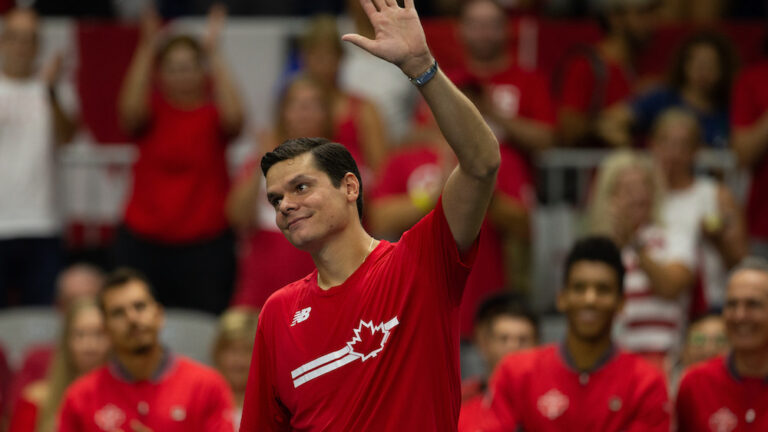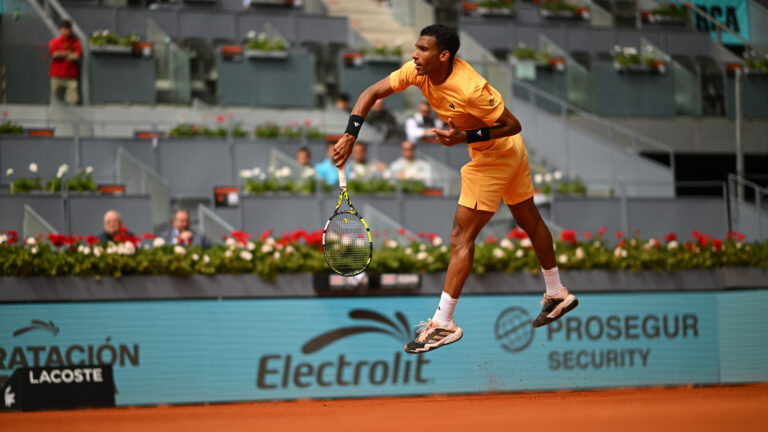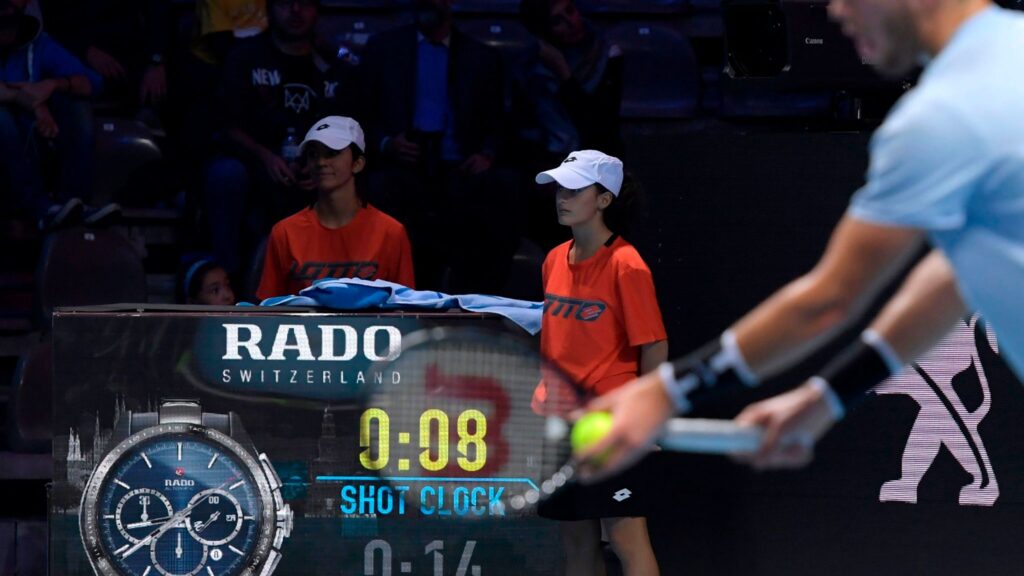
Photo : Sky Sports
28 seconds, 30 seconds, 34 seconds. All times that elapsed between points as Félix-Auger Aliassime defeated Maxime Cressy on February 28 in Dubai.
What about that 25-second serve rule?
Indeed.
Wasn’t it introduced just a few years ago on a really big clock everyone, including the players, can see?
Yes, it was.
But it was a mere mirage.
I haven’t carried out extensive research or looked at the data, but as I followed Auger-Aliassime vs. Cressy, I was irritated by the time taken between points during the drawn-out first set.
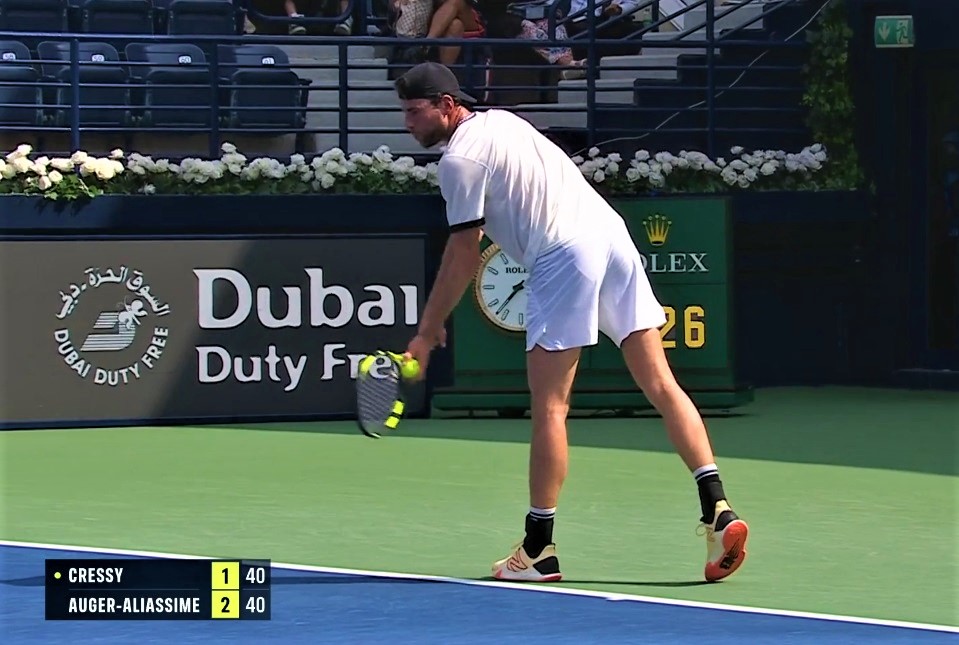
In the 12th game alone, Cressy made 6 double faults.
Read also: The lost art of the serve and volley
After one of them, it took 38 seconds before he finally tossed the ball to serve. That’s 14 seconds more than the rules allow. In the second set, it was 42 seconds between points. On my stopwatch, I got to 36 seconds with still 9 seconds left on the countdown on the court. That’s a full 21-second gap.
42 seconds! That’s huge!
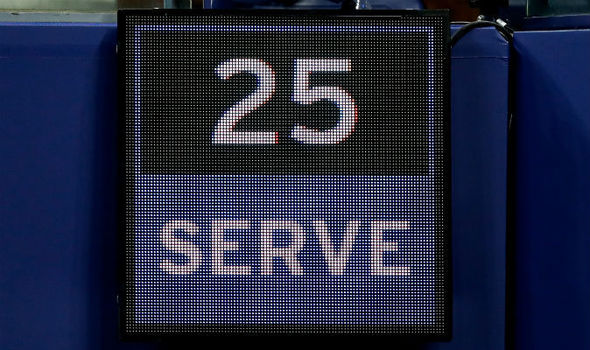
How long did it take to seal the first set? A full 90 minutes in which there were virtually no solid rallies.
Of course, logic and good judgment dictate that the chair umpire should allow a player a few extra seconds to recover after a gruelling point. But in that 12th game, Cressy was just churning out aces and double faults, plus all the serves Félix couldn’t get his racquet on.
Three hours later, the match ended at 7-6 (4), 3-6, 6-3 after about a dozen good rallies at most.
It almost defies logic.
Fast-forward to Indian Wells and the marvellous showdown between Félix and Carlos Alcaraz, when a fun and intriguing fact appeared at the bottom of the screen.
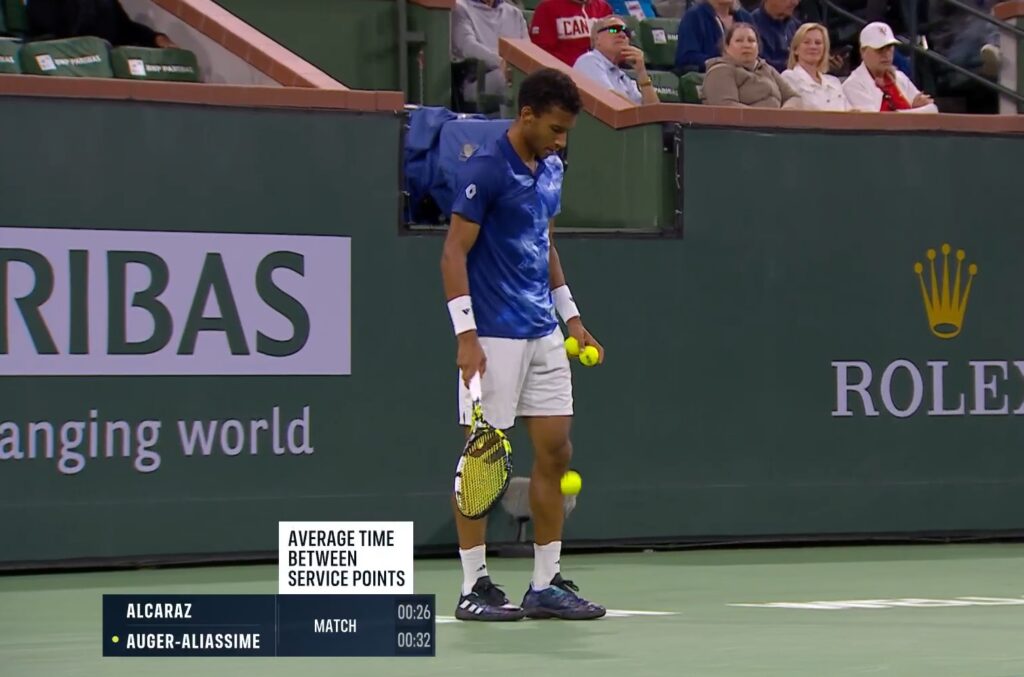
If Félix’s average time between service points was 32 seconds but he never got called on it, then the countdown started at least seven seconds after the end of the previous point. That’s major. And that’s just an average, so there had to be delays longer than 32 seconds.
In 2019 (WTA) and 2020 (ATP), fans were relieved when the serve clock was introduced. The 25-second rule, which actually wasn’t new, was rarely applied because there were as many ways to apply it as there are chair umpires. Something had to be done to expedite the matches, which had become way too long for spectators and broadcasters.
Fail.
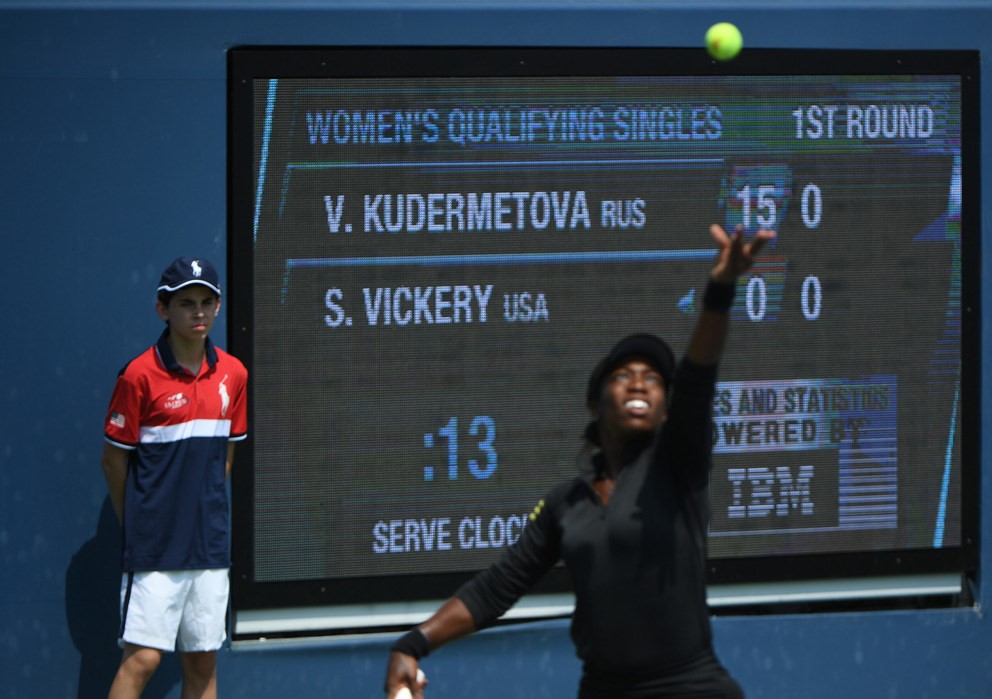
Of course, the rule won’t work if umpires keep handing out time.
Read also: Alcaraz returns to No. 1 with Indian Wells win
My solutions:
- The countdown starts as soon as the point is officially won. There must be a technical way to start it, even if it means asking another official who isn’t the umpire to do it.
- The maximum is extended to 30 seconds between points so players have time to recover as necessary.
- There’s an alert when the time is up. If the ball’s in the server’s hand, the server loses the first serve.
As simple as that.
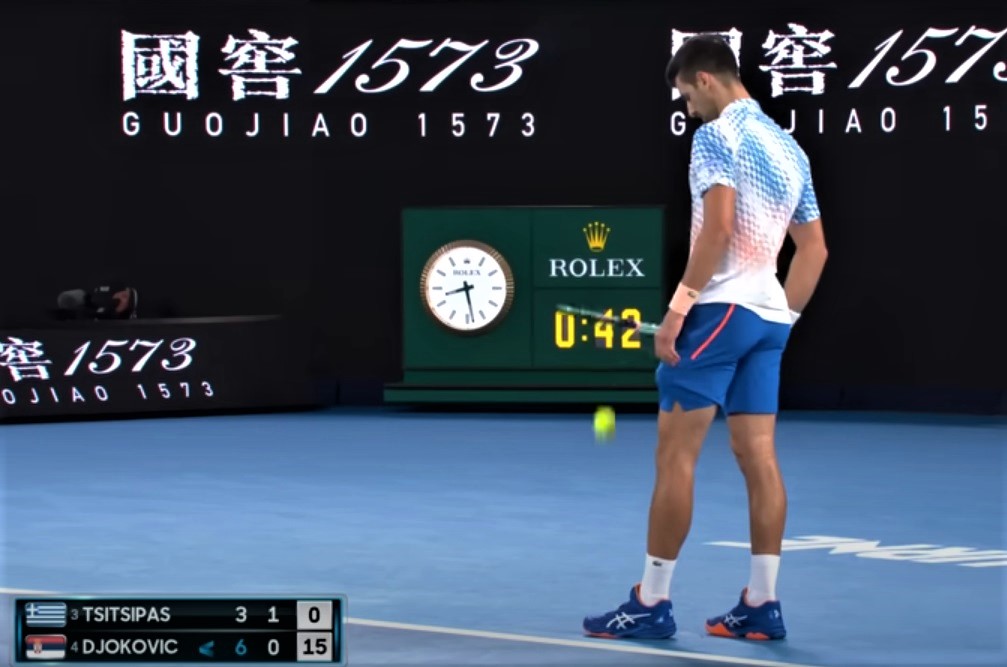
It’s a fact that quick servers will keep serving quickly, average servers will stay at average speed, and slow and really slow servers will have to adjust.
Conclusion: players were taking too long on serve, so they tried to police them. Then officials became too accommodating, and now they need to be called to order.
Problem solved.
EVEN GOOD (AND ENDURING) THINGS COME TO AN END
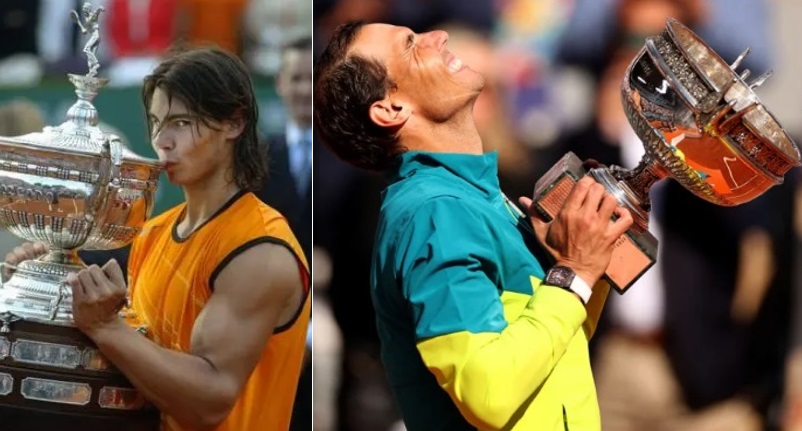
Rafa Nadal charged into the ATP Top 10 on April 25, 2005.
Now, after 912 straight weeks, 6,384 days, he’s bowed out.
Unreal.
Read also: Rafael Nadal’s Roland-Garros dominance by the numbers
Much like his unmatched stats and achievements on European clay, it’s a record no one will ever beat or even come close to.
“It’s incredible consistency,” Novak Djokovic said in Dubai a few weeks ago. “He has been well-known for that over the years. Yeah, just full respect for him. Just being able to for almost 20 years be in the Top 10, that’s unheard of, honestly. It speaks about the quality of the tennis, just his consistency throughout the year, playing well on all surfaces.”
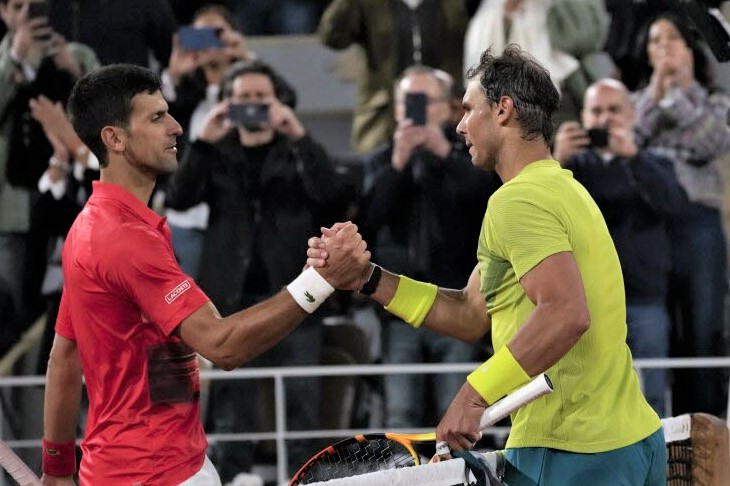
Despite his injuries and the pandemic, Nadal was a constant presence among the elite.
His is the longest Top 10 reign in men’s tennis, and he far exceeds his closest rivals and fellow legends.
| Weeks | Player | Years |
| 912 | Rafael Nadal | 2005-2023 |
| 789 | Jimmy Connors | 1973-1988 |
| 742 | Roger Federer | 2002-2016 |
| 619 | Ivan Lendl | 1980-1992 |
| 565 | Pete Sampras | 1990-2001 |
In case you were wondering, Nadal doesn’t hold the all-time record, which belongs to Martina Navratilova.
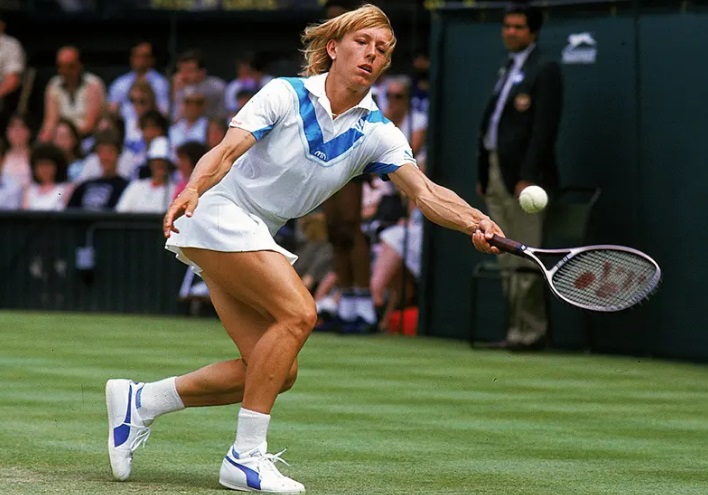
| Weeks | Player |
| 1000 | Martina Navratilova |
| 746 | Chris Evert |
| 625 | Steffi Graf |
| 508 | Gabriela Sabatini |
For how much longer will Rafa grace us with his presence on the courts despite his recurring injuries and age (36), which are constant reminders that retirement may be fast approaching?
Perhaps the day will come when he feels he can’t deliver even the minimum with respect to his sky-high expectations and performance standards.
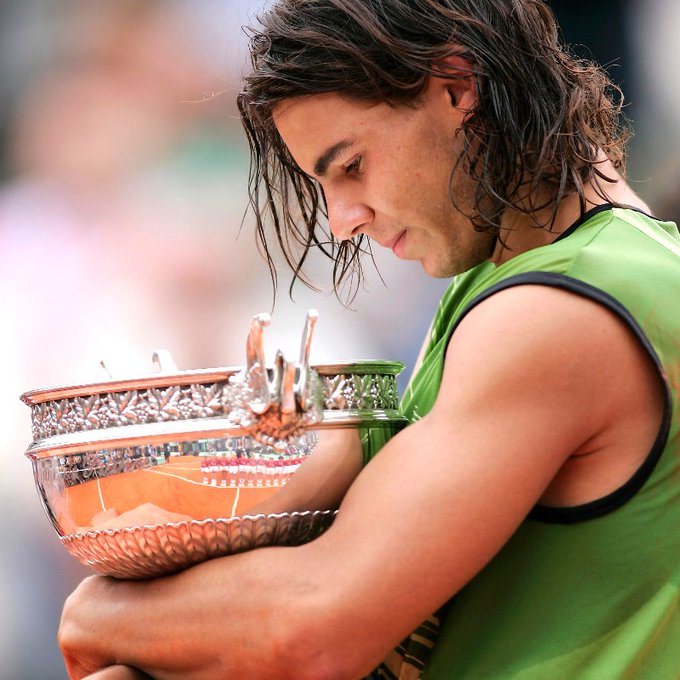
Don’t expect him to drag his racquets from tournament to tournament if he isn’t a contender. And don’t expect him to go from the infirmary to rehab and back again many more times.
Legends take their leave early. And that’s okay.
Tennis, BUT MAKE IT SPICY
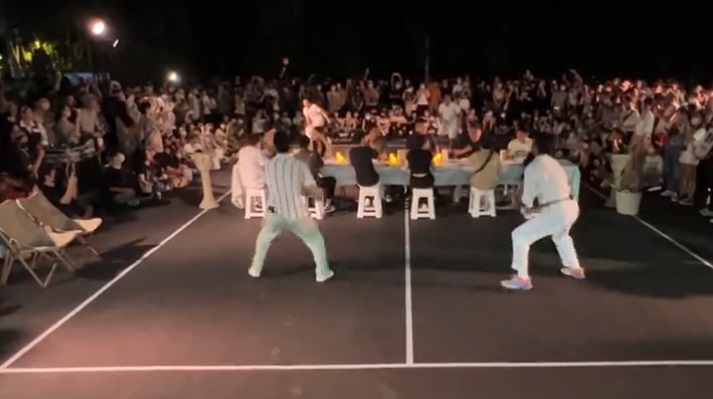
Here’s some tennis you’ve probably never seen before.
Not because the court is really tiny, but because there’s a table full of diners instead of a net.
Don’t ask me who, what or where. I couldn’t come up with any info. But what I did come up with are some eggcellent puns.
So what was cooking on the court? You butter believe the match didn’t cater to everyone’s tastes, as diners were peppered with balls. They may not have been bready for it, but it seems they still managed to romaine good sports about it.
It isn’t clear how much was at steak or how unbeerable the match was, but hopefully no one got too salty when the bill came.
From the looks of it, it was a really big dill.
=======================================================
Email: privard@tenniscanada.com
Twitter: @paul6rivard
Follow all our Canadians in action here.


